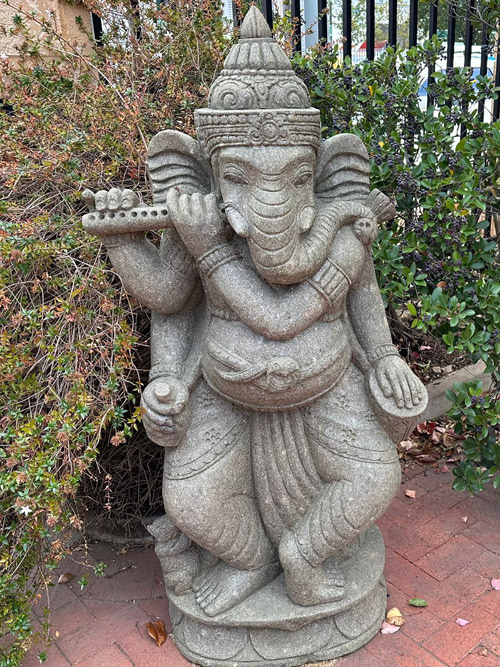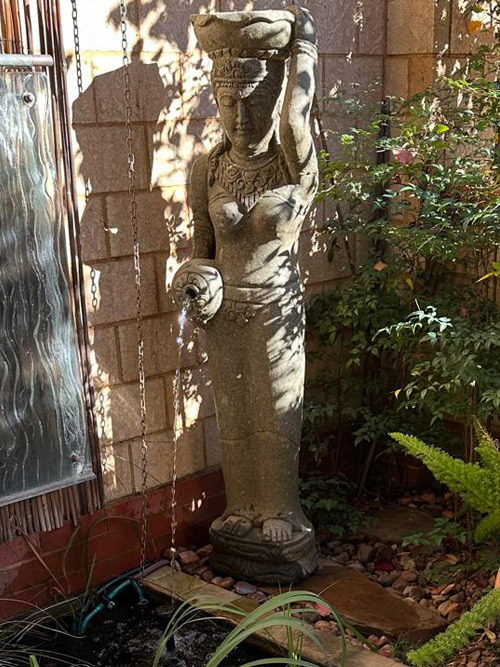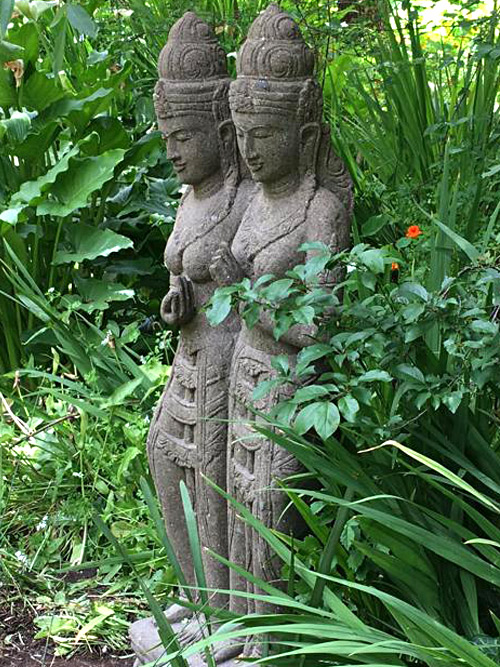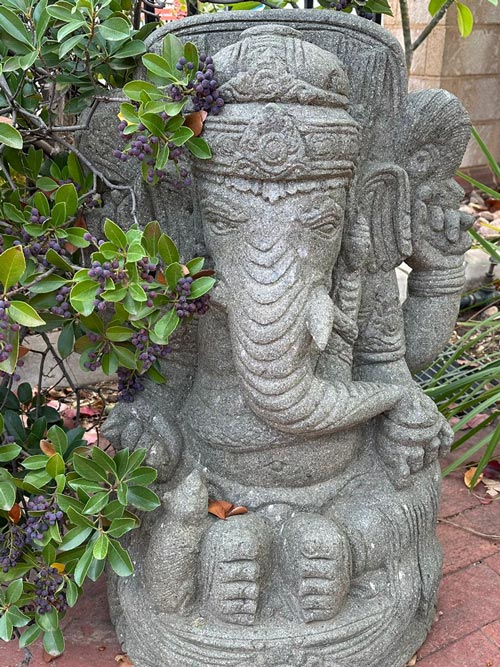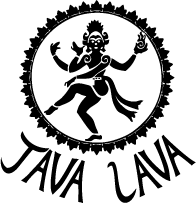
Meditation Ganesha
Ganesha meditation, rooted in Hindu tradition, offers a powerful path to overcome obstacles and enhance mental clarity. He is revered as the remover of obstacles, and his energy can be invoked to clear blockages and promote inner peace. Ganesha meditation, often combined with mantras, visualizations, and mindfulness, facilitates a connection with inner wisdom and auspicious energy, such practice can lead to personal growth and living a balanced life.
Ganesha’s Elephant head represents wisdom and knowledge, symbolizing the vastness of the universe and the ability to perceive beyond the ordinary.
His companion the mouse symbolizes the ability to overcome selfishness and desire, encouraging the detachment from worldly attachments. His broken tusk represents self-sacrifice. His large belly symbolizes the universe, his capacity to encompass everything, and his ability to be a provider.
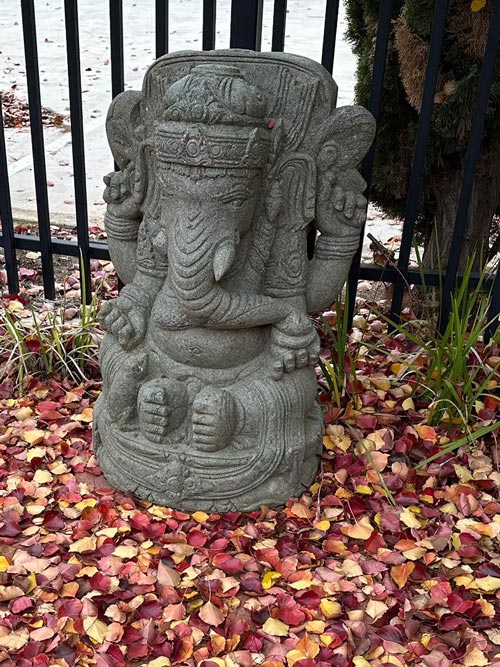
The sweet foods he is holding represents the sweetness of life and the joy of spiritual practice. His seven arms represent his seven virtues, including compassion, wisdom, strength, self-control, creativity, and the ability to act.
The sword represents the power to control negativity, remove obstacles, and protect. Kundalini yoga connects Ganesha to the first chakra known as the Muladhara or root charkra, emphasizing his role in grounding, stability, and overcoming challenges.
Meditation Ganesha
Ganesha’s Elephant head represents wisdom and knowledge, symbolizing the vastness of the universe and the ability to perceive beyond the ordinary.
His companion the mouse symbolizes the ability to overcome selfishness and desire, encouraging the detachment from worldly attachments. His broken tusk represents self-sacrifice. His large belly symbolizes the universe, his capacity to encompass everything, and his ability to be a provider.
The sweet foods he is holding represents the sweetness of life and the joy of spiritual practice. His seven arms represent his seven virtues, including compassion, wisdom, strength, self-control, creativity, and the ability to act.

The sword represents the power to control negativity, remove obstacles, and protect. Kundalini yoga connects Ganesha to the first chakra known as the Muladhara or root charkra, emphasizing his role in grounding, stability, and overcoming challenges.
